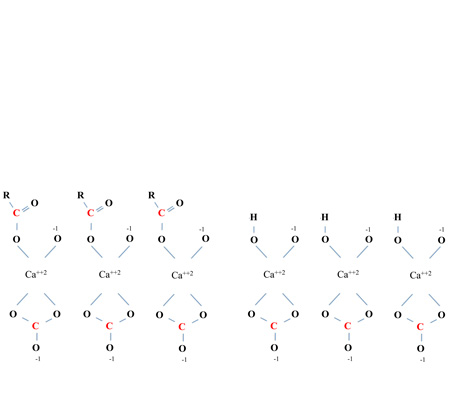Lithography

Prepared Plate ...
At this point the basic work is done. Although the drawing is not visible, the areas still have the fatty acids and are now resistant to water. So they will accept ink in proportion to the concentration of the fatty acid groups bound to the surface. And if you wet the stone before rolling on the ink, the ink will not transfer to where there are no fatty acids.
However, if you forget to wet the stone or don't wet it well enough, then the ink will coat both the drawn and the blank areas. That can cause beginning students to go into deep lamentation, but fortunately, the instructor can show you how to quickly fix that problem.
In actual practice, though, there are a couple of extra steps before inking the stone for prints. It is customary to treat the surface with a small amount of asphaltum, that tar. The asphaltum helps stabilize the image even more and make the areas of the drawing even more receptive to ink. Then you wet and re-ink the surface to bring out the drawing. You then do a second etch with the gum arabic and nitric acid, although it's usually a bit weaker than the first etch. You do a second asphaltum treatment, clean it off, and you're ready to proceed.
So to proceed, let's proceed.